Green mixtures
Artists' Materials
The wide range of green hues present in the manuscript’s landscapes, borders and architectural backgrounds was obtained with no less than six green mixtures.
Most contain one or more blue components (azurite and/or indigo) in addition to lead-tin yellow, orpiment or massicot. Coarse yellow particles are often visible in these areas under magnification, usually either within a dark blue indigo matrix or alongside bright blue azurite particles.
The green branches and leaves which decorate the border panels and line-fillers and surround the red and blue initials contain instead a mineral copper green, probably malachite, and lead-tin yellow. The latter is mixed with an organic green colourant in the light green tiaras worn by God the Father in some scenes and in the lozenges painted over the columns on fol. 3r.
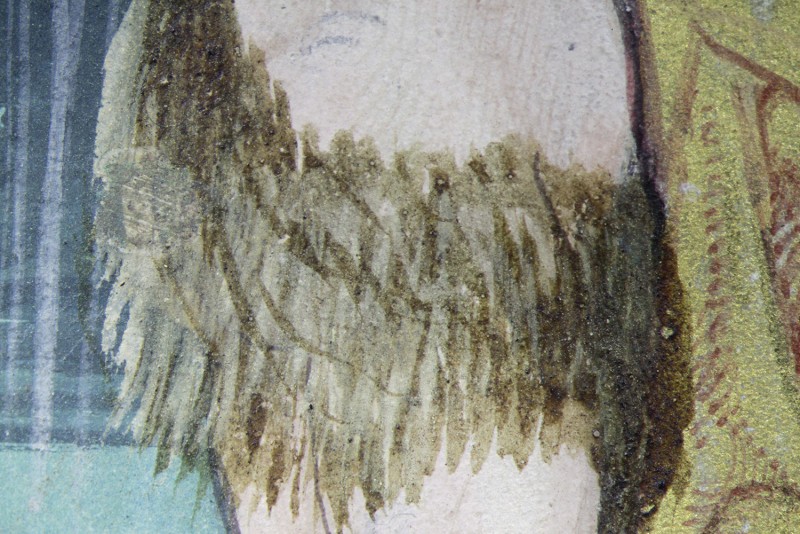
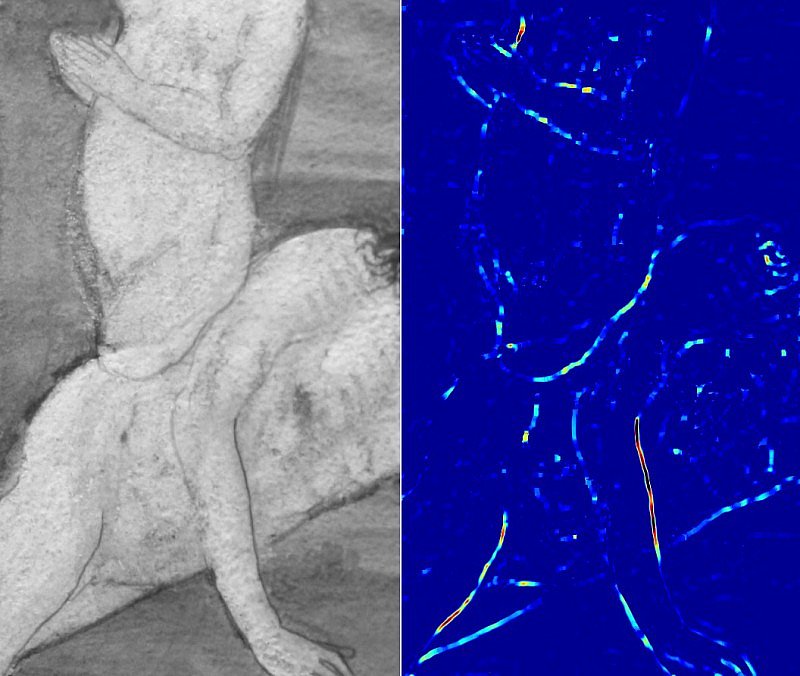
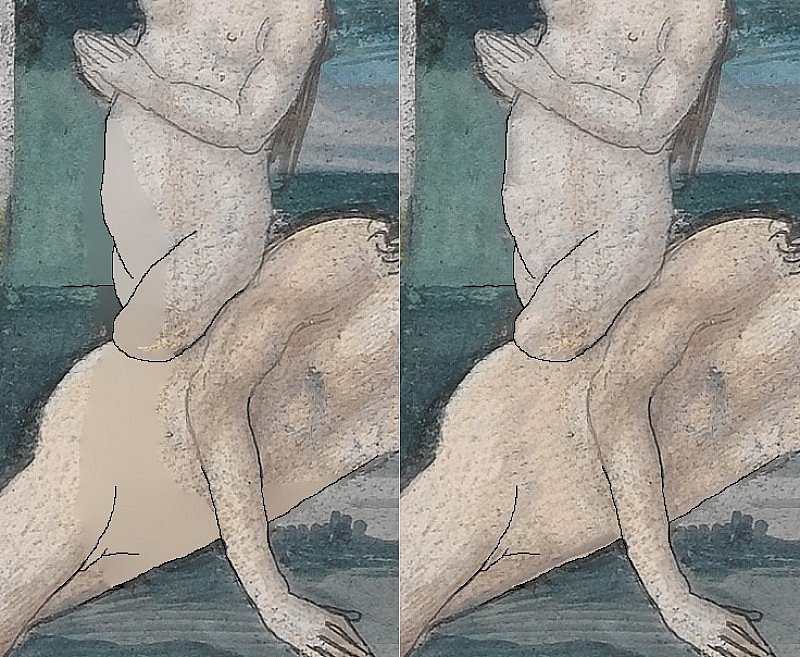
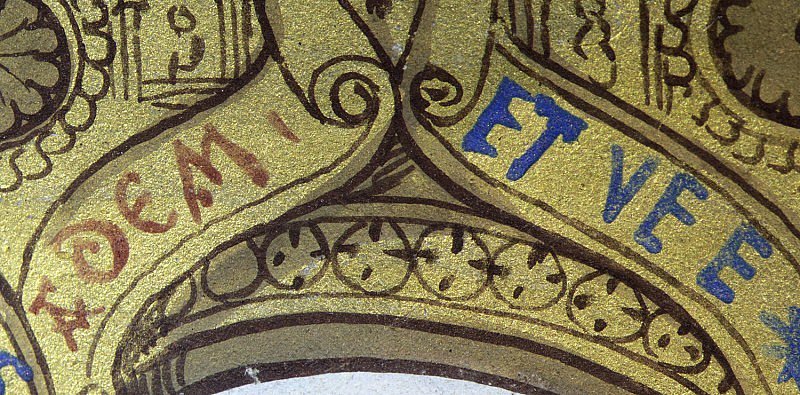
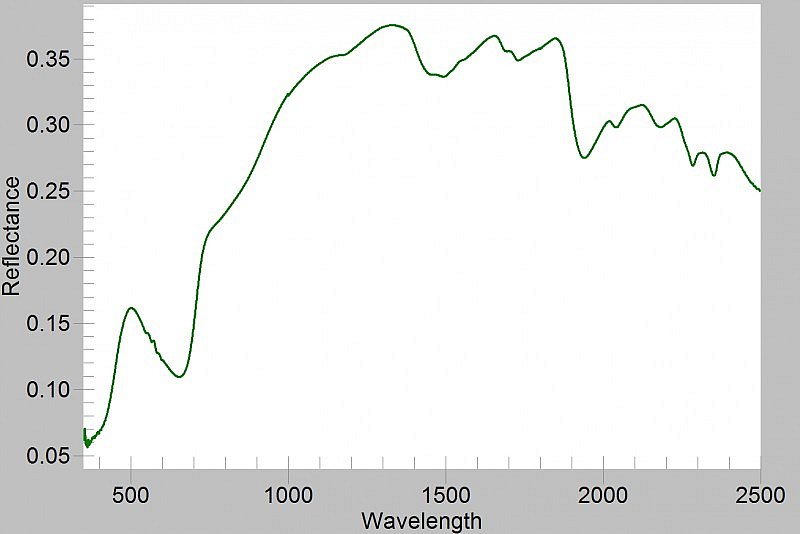
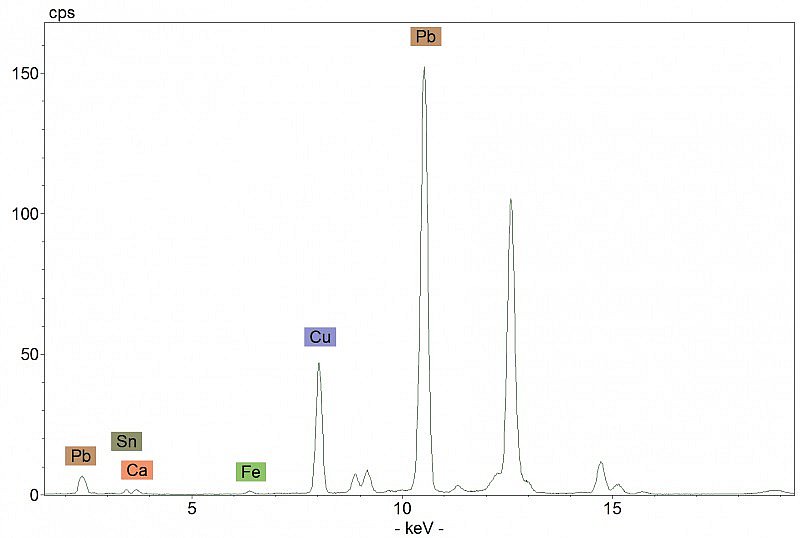
God creating sun, moon and stars; God creating Adam and Eve; God instructing Adam and Eve
At the request of a post-medieval owner who was offended by their nudity, the images of Adam and Eve on this page were overpainted to conceal the couple’s nakedness; Eve acquired a veil and Adam a skirt (hotspot 1). Using virtual ‘image restoration’ based on Partial Differential Equations (PDEs), it has been possible to create mathematical reconstructions of the scenes and to digitally ‘restore’ the figures to their original state (hotspot 2 and ‘Virtual restoration’ layer).
This is one of the pages where the artist used the unusual pigment known as ‘artificial orpiment’, mixed with lead-tin yellow in feathers of the bird in the upper border.
